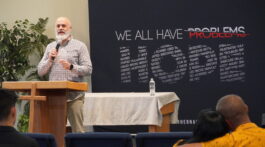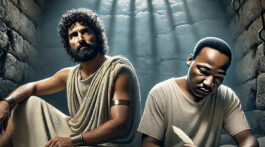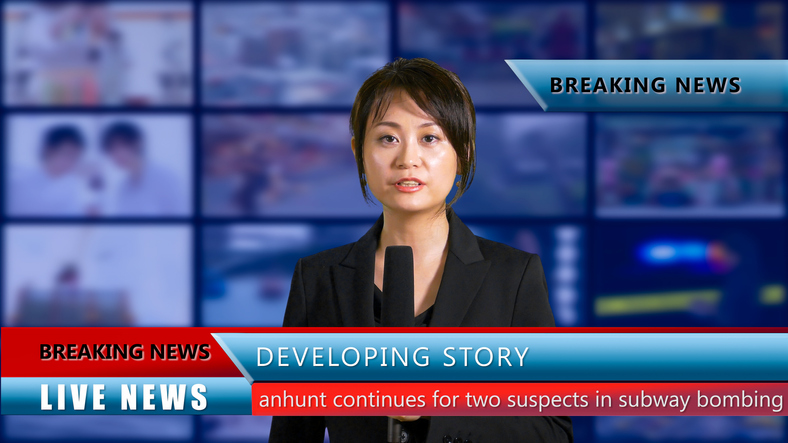Now more than ever our lives depend on us knowing what the truth is. However, with all the information out there, how can one really know what is true?
“If it is on the web, it has to be true!”
In the past, the media may not have gotten everything completely correct, but we trusted them and expected there could be minor differences from the truth. For example, one time I was in a building where a newsworthy incident occurred. When I read the paper the next day, the article said the incident had happened during breakfast. It was a couple hours after breakfast actually. I think they got the fact wrong because they knew it had happened in the dining hall in the morning. Those are the mistakes we are used to seeing in the media, and a “real” news source will print or announce a retraction.
Just because someone wrote, said, or filmed it, does not necessarily mean it is true.
It is unusual for any source to be completely 100% untrue. If it was completely untrue, it would be easier to distinguish. Even the devil, uses truth to convince us of lies. Beware every single writer, speaker, or filmer is designing what you are reading or seeing to convince you of something. This is true of magazines, TV, books, and even the Bible. The author has something to say and he/she wants to convince you of the truth of what they are saying and persuade you to come to their side. Yes, even me! I believe what I am saying and I want to convince you I am right.
Are you going to be a buyer?
Even in 2020, we still have many media outlets continuing to be truthful and as non-partisan as possible, but we need to know how to know the difference. So let’s look at 5 ways you can distinguish between truth and not-quite-truth.
First, we need to know if what we are looking at is supposed to be an opinion piece, editorial, commentary, or actual news. There is more and more commentary, editorial pieces and opinion pieces on TV, in print, and on the internet.
True journalism is the most likely kind information which will be neutral. This means you likely will not agree with all of what you hear, but you also will not disagree with all you hear. It should not be slanted in any direction, it should be facts and let you draw your own conclusion. Also, they often will pull experts from both sides of an issue who may have very different opinions, but again you will be presented with information to draw your own conclusions.
On the other hand, sources pushing untruths are very likely to have writers and broadcasters who are not disguising their opinions and just openly speaking them as fact. When this is appropriately introduced as an opinion piece, editorial, or commentary, it is ok. We can listen to an opinion and maybe even learn something. However, when we think of it as “news” we can begin to believe things which are not true.
We read the reviews and check out the facts on cars, dishwashers, doctors, and restaurants. Why not on news sources?
Second, check the source out. Does the source have a physical address? Is there a phone number located anywhere which you could call? Is there an author, writer, or producer? Who owns the company? These are important because if there is no actual “source” they are hiding something and the information is not legitimate. Often false sources, do not give you this information. It also can be false information which you can discover the untruth of by looking into it further on other sites.
The person who wrote or produced the material is really the person you are trusting when you believe what you see/read. Who is this person? Are they real? Can you look them up and see some of their other material? This will give you an idea of their values and what their slant may be. Often false sources have no author listed.
Another item you can check on is the “experts” quoted. Usually there will be some experts or eyewitnesses quoted, unless the journalist is the eyewitness. Check out these people. If an expert is introduced as being the head of the Harvard Botanical Biology Department, look it up. You should see their picture there. However, what if they introduce the expert as the president of Fremont State University? A quick search will show there is no such university.
The author should be presenting more than one person’s opinion/expertise and they may not completely agree which could be a sign of truth. Rarely is there only one side to a story.
Third, pay attention to your emotions! Are you feeling increasingly angry as you watch/read? Commentators often increase their ratings or sell stories by playing on our emotions. Stirring up anger and fear is one of the main ways this is done by false sources.
Is it God’s plan for us to be angry and fearful? Is it healthy?
Fourth, are there any facts in the story which can be verified elsewhere? Usually a true story, especially if it is national or global, can be found in multiple places in this day and age. Verify the story. Is it quoting statistics you can look up? Are there any facts an expert states which you can look up and verify with a different expert or reliable source? This is an important way to ensure you are seeing something truthful.
Fifth, look at the language. Do they use extreme words? This would be something like “enraged” instead of “frustrated”, “shattered” instead of “damaged”. Harsh words, particularly in titles, are chosen to cause people to click. In fact, if the article is not true, the title may have nothing to do with the content.
I don’t have time to read or watch everything that crosses my screen.
This is why limit the sources I will interact with. I have chosen five sources of news I consume. I know they are all safe, although, all do have opinion pieces but they are clearly marked as such. Three are local news outlets–one print and two television. Local news affects us much more than anything else which is why I want to pay attention to this. Another is a radio station with a global network. The last is a national/international television news source. If something seems off, I question it and look it up. Note none of these are Facebook. Social media was never meant to be a news source and the articles shared frequently have many faults.
For one of the best sources of information on this topic, visit this link to a very comprehensive paper a teacher put together for students.
In my next article, I will be discussing the Christian morals and standards to consider when sharing links to stories or videos.










